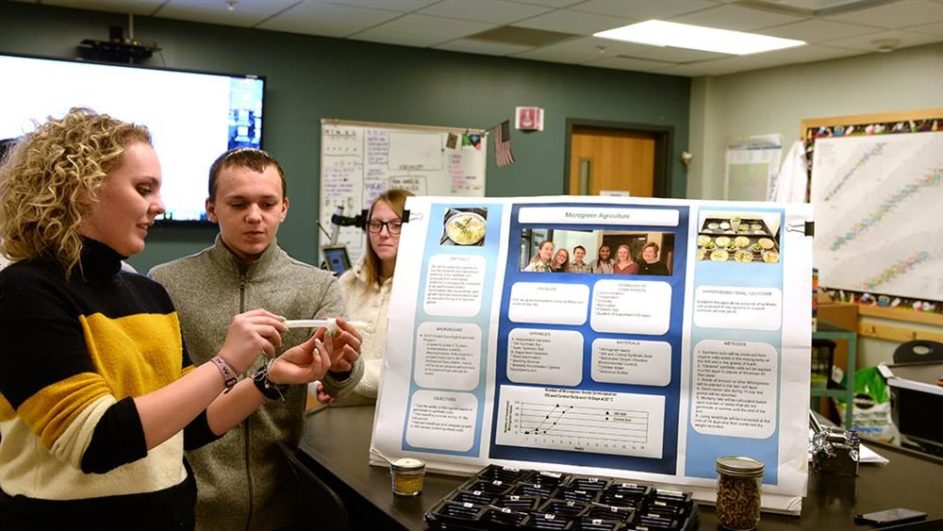A group of Knox County students is exploring ways to turn waste into soil, and they’ll send a package into space to test their hypothesis.
The student spaceflight experiment team at Career Magnet Academy was chosen by the National Center for Earth and Space Science Education to participate in the project.
The experiment will fit inside a marker-sized plastic tube that in the spring will travel on a shuttle flight to the International Space Station.
CMA juniors Hannah Shinzato and Elizabeth Randolph helped design the bioreactor that fits inside the plastic tube. The bioreactor will contain food scraps and other waste, assembled in part by sophomores Joshua Foster and Diamond Thomas, which in the microgravity environment will be combined with blue oyster mushrooms and water.
The idea is to determine how efficiently the waste material is decomposed into soil, compared with the same process on Earth.
Once the material is returned to Earth, CMA junior Isabella Beal is leading an experiment that will plant broccoli seeds in both the space soil and a sample of control soil to see how plant growth is affected. Junior Katelynn Horner has helped lead communications, including visual design materials that help summarize the effort.
“We only have a small amount of soil, so we can’t expect a whole head of broccoli,” said Beal. “But we are hoping that we’ll get something. … We’re just hoping to expand the future of growing things in space.”
The project is led by CMA science teacher Cindy Brown, who said it is a great opportunity for students to get hands-on experience and explore questions that are relevant in the real world.
“Aboard the ISS they can’t go bring in soil to (the astronauts), so this would be a way of taking waste materials and being able to grow microgreens or gardens or whatever they might need off of Earth,” Brown said.
Thomas predicted that the space soil will be able to grow plants and said it makes a difference to work on experiments rather than simply read about them.
“You really have to think more. … It feels good to actually be a part of it, doing it and knowing it was your work,” said the sophomore.

